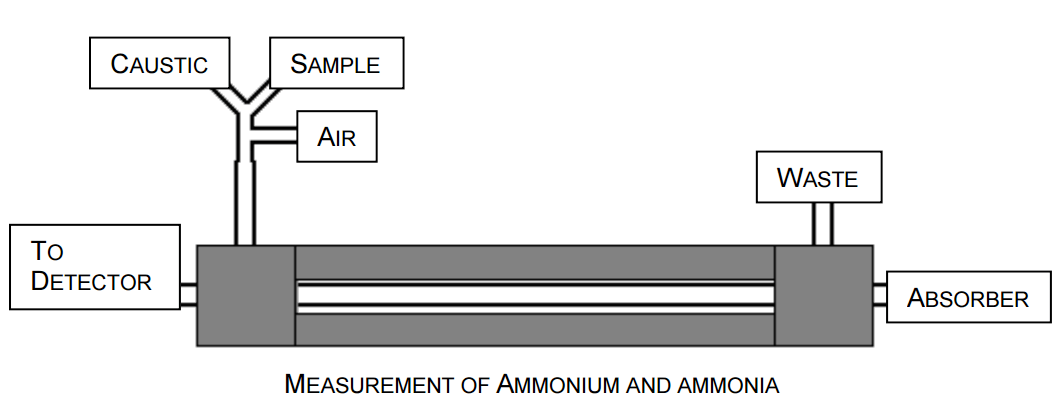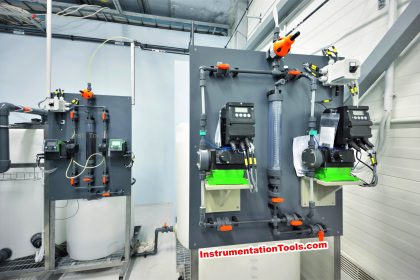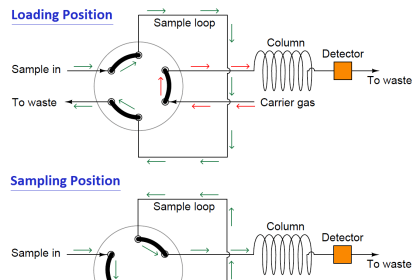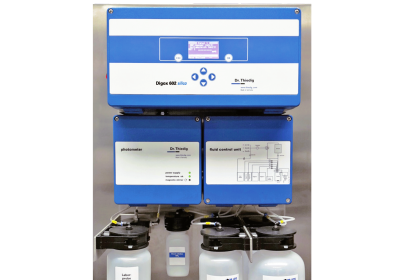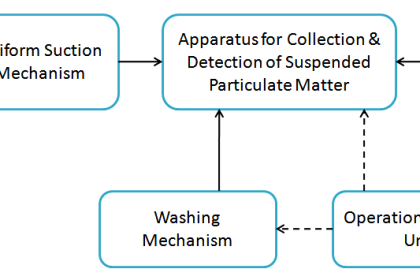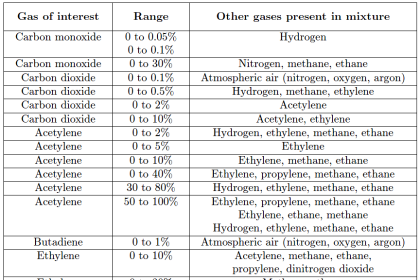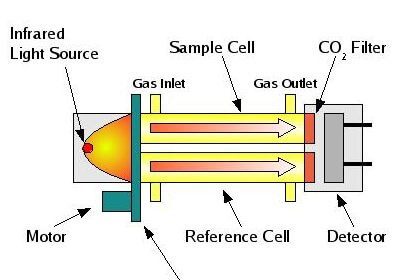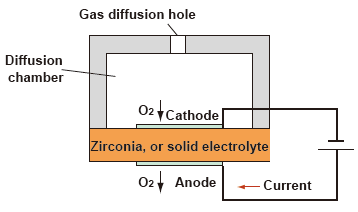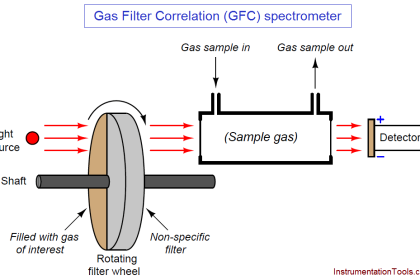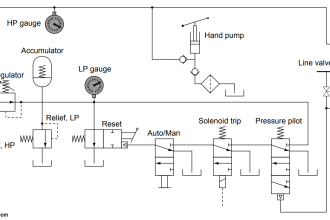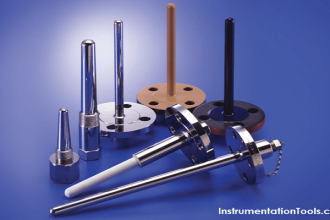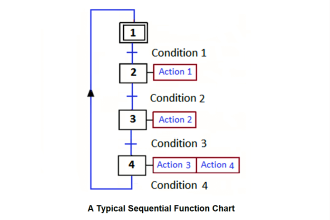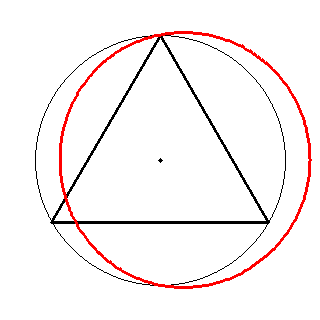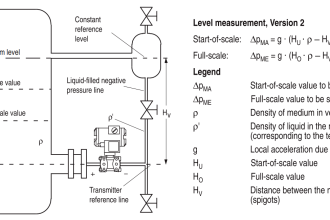Ammonia/Nitrate Analyzers are based on the principle of diffusion across a gas diffusion membrane coupled with electrical conductivity measurement as first described by Carlson.
The pump directs the sample, caustic, and absorbing solutions into the Membrane Diffusion Cell. Within the cell, the sample is mixed with a caustic solution.
The resulting solution has a pH sufficiently high to convert virtually all of the ammonium ion present in the sample to dissolved ammonia gas, as shown in below equation.
The sample/caustic solution flows past one side of a membrane that is permeable to gases but not to liquids or ionic species.
The dissolved ammonia gas in the sample/caustic mixture will diffuse across the membrane.
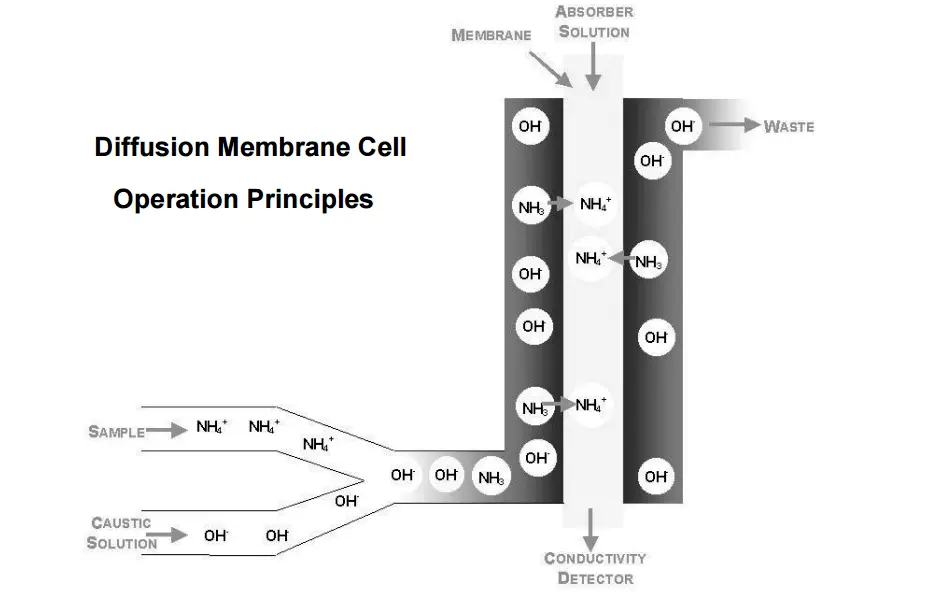
NH4+ ( aq) + OH– (aq ) → NH3( g) + H2O
On the other side of the membrane, a buffered solution absorbs the diffused ammonia gas. The buffered solution then flows into the conductivity detector.
The flow passes through a low volume heat exchanger to establish thermal equilibrium of the solution before it reaches the conductivity cell.
The conductivity cell measures the change in electrical conductance of the absorbing solution. This change is proportional to the concentration of ammonium in the original sample.
The Diffusion Membrane Cell directs the liquid flow through the tubular membrane to the conductivity detector.
These include the caustic solution, the absorbing solution, the samples, and a recommended air segmentation line.
The caustic and sample solutions are mixed in a tee before entering the gas diffusion cell. This cell is housed in a temperature-controlled enclosure.
Included in this enclosure are two preheating coils used to heat the incoming reagents to a stable temperature.
The temperature should be maintained at least 5°C above the highest expected ambient temperature. Temperature control improves baseline stability, reproducibility and detections limits.
An ultra sensitive conductivity monitoring system is used to detect the ammonia present in the absorbing solution after it passes through the diffusion membrane.
The flow cell is located in a temperature controlled compartment close to the outlet of the diffusion membrane.
The electrical signal obtained from this cell is collected and reported by the conductivity meter which indicates the value of ammonia.
Source : Timberline
